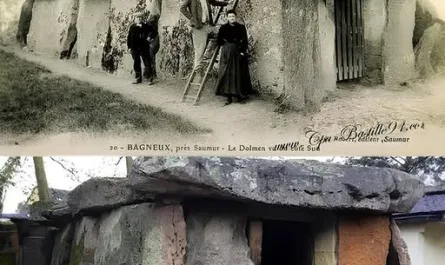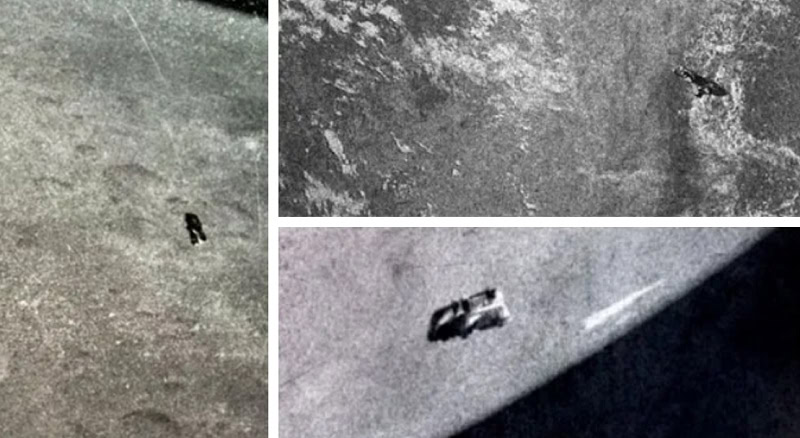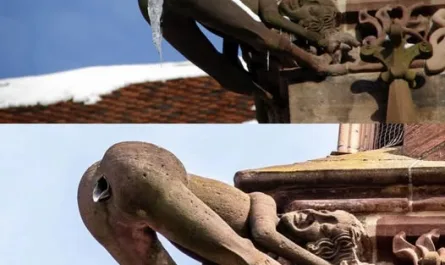The towering pyramids of ancient Egypt, those enduring symbols of pharaonic power and spiritual ambition, held a secret at their very apex: the pyramidion. This wasn’t just a finishing touch; it was a potent symbol, a small, meticulously crafted stone that represented the ultimate connection between the earthly realm and the divine. Imagine these colossal structures, their gleaming white limestone sides ascending towards the heavens, culminating in a radiant capstone – the pyramidion – catching the very first and last rays of the sun.

This apex stone, often adorned with gleaming gold leaf or a reflective metallic sheen like electrum, was more than just decorative. It was the point where heaven and earth were believed to meet, the sacred dwelling place of the solar god Ra or the syncretic deity Amun-Ra. As the embodiment of the sun’s life-giving energy and its eternal cycle, the pyramidion was a powerful testament to the pharaoh’s divine connection and his promise of eternal life. The reflective surfaces weren’t just aesthetically striking, creating a dazzling beacon visible for miles, but they also served a profound religious purpose, bathing the pyramid in sunlight and emphasizing its celestial link.
Etched into these precious stones were stories in stone – royal titles proclaiming the pharaoh’s legitimacy, fervent prayers seeking divine favor, and potent religious symbols reinforcing the king’s spiritual and earthly authority. These inscriptions were a constant reminder of the pharaoh’s role as intermediary between the gods and humanity.
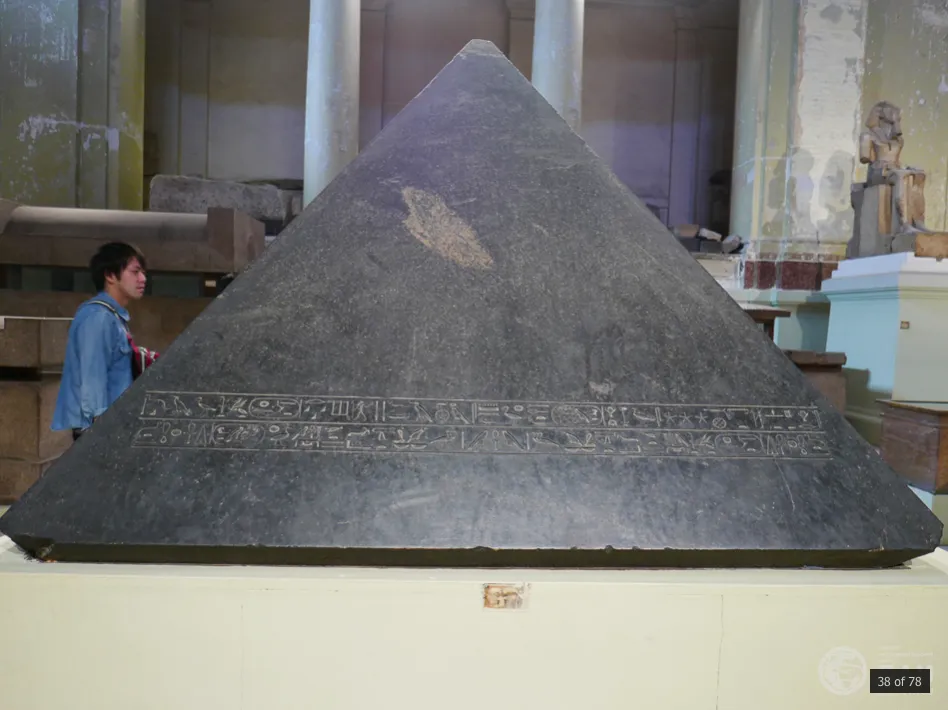
Among the pantheon of ancient Egyptian pyramids, the Black Pyramid of Dahshur stands out, not for its original gleaming facade (which has long since faded, revealing its dark mudbrick core), but for the remarkable preservation of its pyramidion. Constructed during the reign of Amenemhat III in the Middle Kingdom, around 1850 BC, this pyramid marked a shift in architectural practices. Its core was built from mudbrick and clay, a testament to the ingenuity of Egyptian engineers, though ultimately contributing to its somewhat less stable form compared to earlier all-stone pyramids. Its nickname, the “Black Pyramid,” comes from this dark, weathered appearance.
Yet, atop this once-grand structure sat a masterpiece carved from a single, formidable block of black basalt. Weighing a staggering 4.5 tons and measuring 1.40 meters in height with a 1.85-meter base, the pyramidion of Amenemhat III has survived the ravages of time remarkably well, save for a single broken corner. The choice of basalt is itself significant. This hard, dark volcanic rock was highly valued by the ancient Egyptians for its durability and its symbolic weight. Often used for sacred objects and sarcophagi, its dark hue sometimes represented the fertile Nile soil and the realm of the afterlife, creating a powerful contrast with the sun-gilded apex it was intended to be.
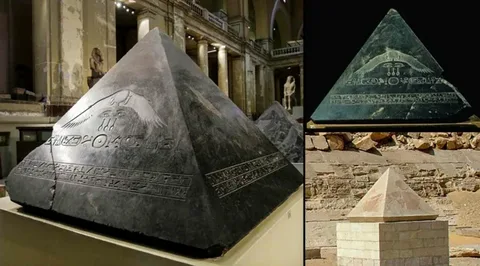
The four polished faces of this extraordinary artifact are a canvas of ancient beliefs, adorned with intricate hieroglyphic inscriptions and powerful symbolism that paint a vivid picture of Amenemhat III’s aspirations for eternal life and his divine connection:
- Facing the East: Towards the rising sun, the pyramidion showcases a majestic winged sun disk flanked by protective uraei, symbols of royal power. Below, the all-seeing wedjat eyes ensure the king’s divine protection, accompanied by “nefer” signs signifying beauty and perfection. The sun disk of Ra prominently features the pharaoh’s throne name, “Ni-maat-re,” creating a clear declaration: “Amenemhat beholds the perfection of Ra.”
- Looking North: These inscriptions delve into the celestial realm, associating the pharaoh’s Ba (his spirit or soul) with the prominent constellation Orion and the vast expanse of the starry night, signifying his hoped-for ascent to divine status and eternal journey amongst the stars.
- Towards the West: This face bears inscriptions relating to Osiris, the revered god of the afterlife. These inscriptions hint at the king’s symbolic journey into the western desert, the traditional land of the dead, promising his successful transition to the next world.
- Oriented South: Here, the inscriptions invoke Anubis, the jackal-headed god intimately associated with mummification and the rituals of the dead. This face emphasizes Amenemhat’s dominion over the western desert and further secures his passage into the afterlife under the watchful eye of Anubis.
Intriguingly, the later erasure of inscriptions containing the name of Amun on this pyramidion raises questions about its history, possibly linking it to the Amarna Period and Akhenaten’s exclusive focus on the Aten. This has even led some scholars to ponder whether the pyramidion ever actually sat atop the unstable Black Pyramid for an extended period.
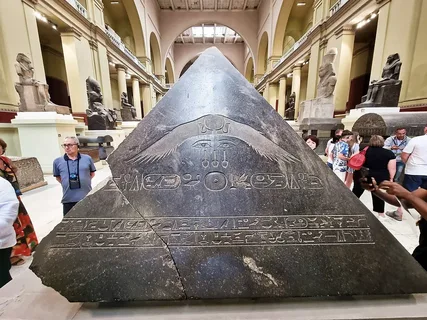
Today, the pyramidion of Amenemhat III resides in the main hall of the Egyptian Museum in Cairo, a silent yet powerful witness to the sophisticated beliefs and artistry of ancient Egypt. Alongside three other remarkable pyramidions, it offers an invaluable glimpse into the religious practices, architectural ingenuity, and profound theological concepts surrounding kingship and the afterlife in this extraordinary civilization. Unlike countless other pyramidions lost to the sands of time or through the actions of looters, this sunlit stone, even separated from its monumental perch, continues to shine a light on the ancient Egyptians’ enduring quest to bridge the earthly and the divine, marking the pinnacle of their remarkable legacy. It serves as a potent reminder that even the smallest detail in these grand structures held profound meaning, connecting humanity to the cosmos in a way that continues to fascinate and inspire us today.


